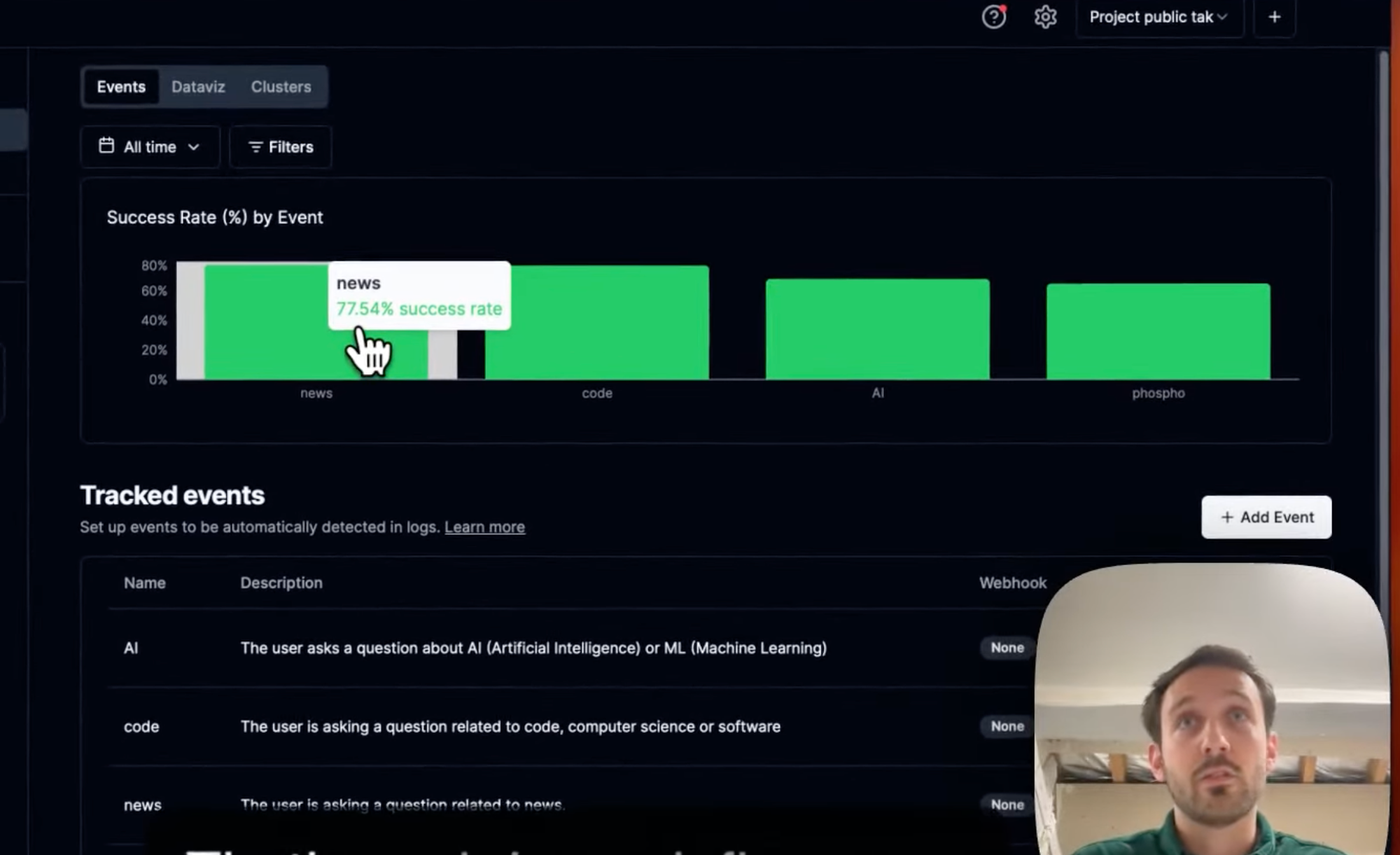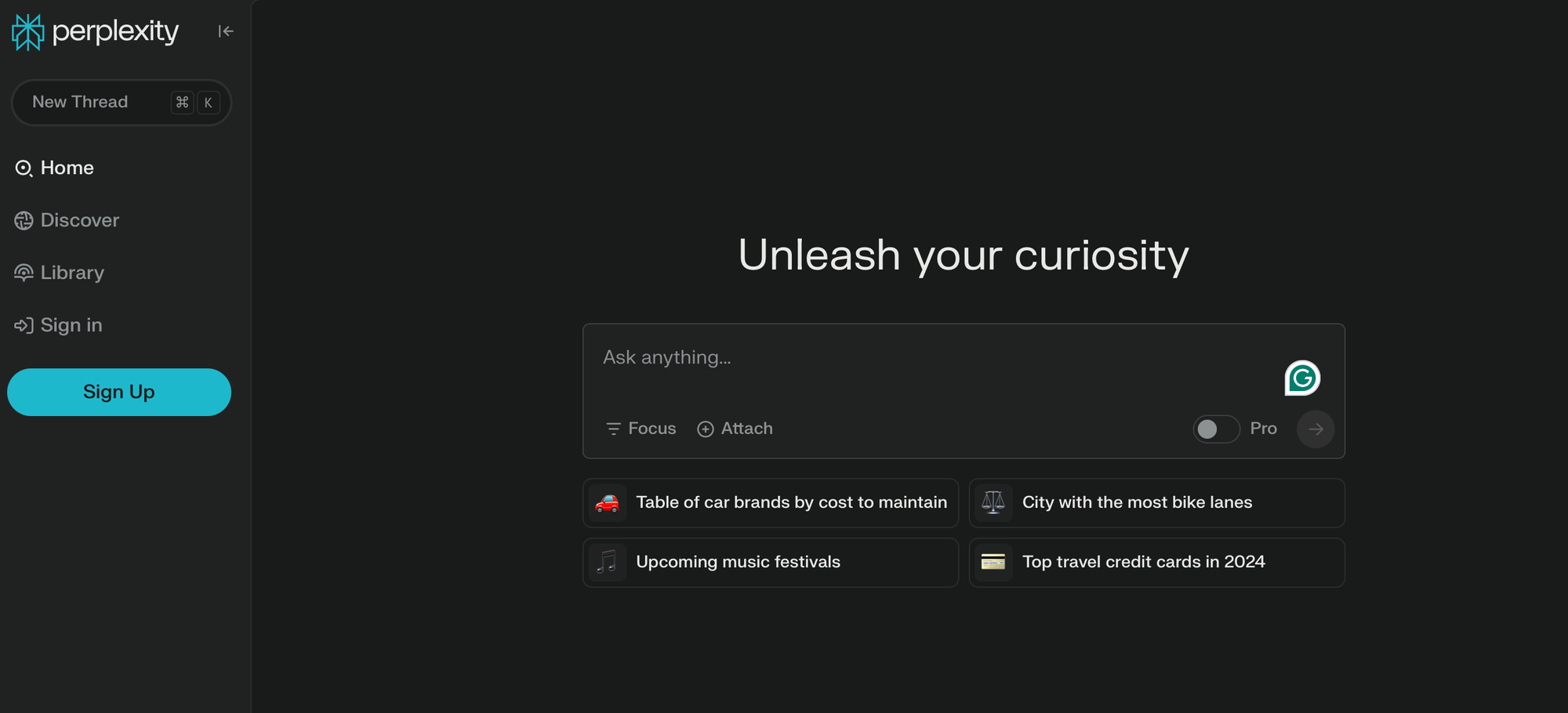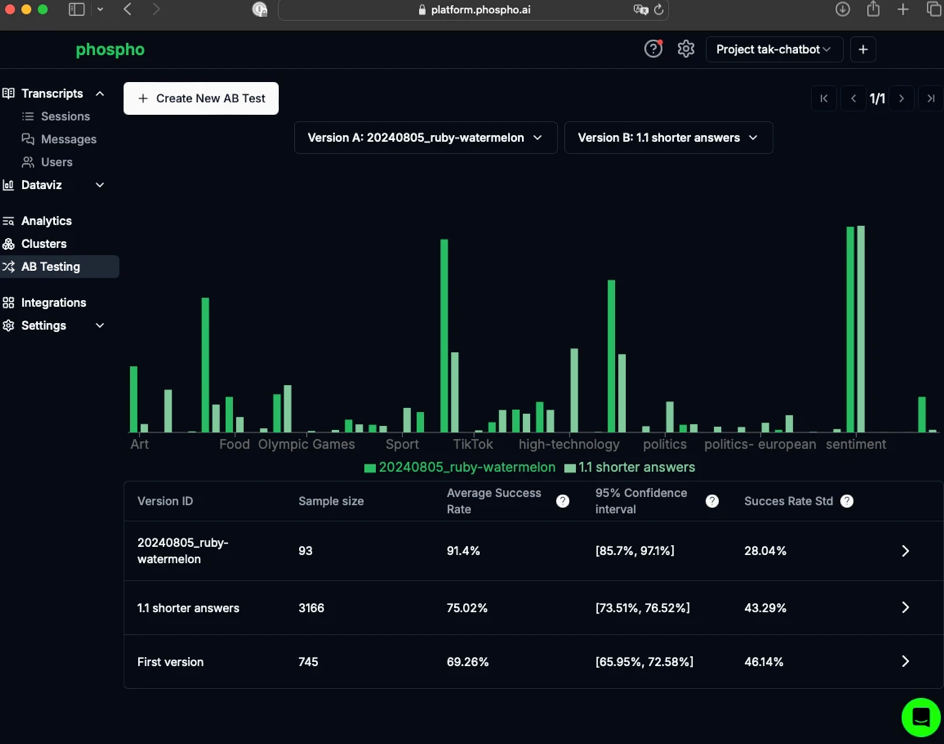How Does AI-Powered Search Work? Explaining RAG, LLM and Perplexity
AI-powered search engines using RAG and LLM perplexity deliver faster, more accurate, and contextually relevant search results. These technologies enable businesses across industries to enhance customer experience and streamline processes by providing real-time, reliable data.

Exciting news, phospho is now bringing brains to robots!
With phosphobot, you can control robots, collect data, fine-tune robotics AI models, and deploy them in real-time.
Check it out here: robots.phospho.ai.
AI-powered search engines have become much more mainstream within the last year, fighting traditional search engines like Bing and Google for the top spot. But how do they work, and what makes them so transformative?
This article will explain how AI-powered search works, how it could revolutionize your business processes, and which technologies (like RAG and LLM) enable it.
We will also explain exactly why AI search engines are essential for businesses wanting to remain competitive in almost every market – from ecommerce to healthcare, fintech and customer service – and whether Perplexity AI is (or is not) the best choice available on the market.
AI-Powered Search: What is it, and Why is it Transformative?
AI-powered search utilizes artificial intelligence and machine learning to enhance search engine results by attempting to comprehend human context and intent.
Traditional, dominant search sites such as Google rank results by keywords, page authority and backlinks. But anyone who has ever had a search query misunderstood by the algorithm knows this approach has its limitations, and results can be inaccurate and lack nuance.
In comparison, AI search returns fast, relevant results even for the most complex queries that traditional algorithmic search engines could not understand.
AI-powered search uses Models such as LLMs (Large Language Models) to understand user queries more naturally and in more conversational ways than traditional search engines, giving more accurate, up-to-date and nuanced responses closer to human interactions.
AI and the Rise of Conversational Search
AI search engines are transformative because they can have dynamic, two-way conversations with their users.
The personalized interaction of conversational search is closer to human dialogue and more accurate than traditional search.
Many businesses are turning to AI-powered search as it delivers real-time insights along with refined results far more relevant to user intent and sentiment, resulting in happier, more informed users and accurate data analytics for businesses, apps and developers.
AI Business Functions Are Growing
It isn't just AI-powered search that's gaining ground among businesses. This 2024 McKinsey report noted in its latest study on generative AI that 'if 2023 was the year the world discovered generative AI, 2024 is the year organizations started using and gaining business value from it'.
To illustrate, the survey found that 55% of respondents had at least one business function using AI by 2023. That number jumps to 72% in 2024.
AI is changing the world and search engines are no exception. Additionally, new technologies such as Retrieval-Augmented Generation (RAG) and perplexity are making AI-powered search engines more accurate and efficient.
RAG: The Backbone of AI-Powered Search
RAG (Retrieval-Augmented Generation) is a natural language processing technique in which Large Language Models (LLMS) are supplemented by external knowledge databases in order to retrieve factual information in real-time while generating natural language responses. RAG makes AI-powered search engines conversational as well as accurate and contextually relevant.
LLMs can pull information from external sources such as databases, news feeds or specialized knowledge bases and produce responses that are much more comprehensive than traditional language models alone.
This approach allows LLMs to have only the most up-to-date information available, according to a RAG LLM Perplexity AI article. The data is then fed back into the generative process so that the model will answer in a contextually relevant way to the user's query while staying verifiable and up to date.
The Advantages RAG Can Bring to AI Search
RAG represents a huge opportunity for AI-powered search engines and brings several benefits to both search engine users and AI applications across industries, such as real-time results, contextual relevance, traceable and verifiable information, and the ability to answer both long and niche queries.
In traditional search mechanisms, results can be stored in static databases, rather than updated in real-time. This means information may become outdated or inaccurate quickly.
In industries like law and healthcare, you can see how the accuracy of search information could impact human outcomes, but this is true in most industries to some degree. You wouldn’t want your customer data to go out of date, or to lose valuable updated information.
Introducing RAG LLM Perplexity
Now to add even more technical terms into the mix! Introducing RAG LLM perplexity.
In RAG, LLMs are made even more transformative when coupled with "perplexity," a metric that measures the uncertainty of language models. Perplexity can also negatively impact the quality of AI-powered search results.
To explain how this works, essentially, the lower the "perplexity," the more confident the model is in its predictions or search results, making AI search engines faster and more accurate.
There are many examples in the software market of tools that lower perplexity in AI search results. Perplexity AI is one key player in this space that uses the RAG model successfully for its AI-powered search capabilities.
AI Perplexity: A Leading Example of AI-Powered Search with RAG
Perplexity AI is one of the leading AI-powered search engines using the RAG model. The engine combines RAG with conversational AI to deliver contextually relevant, accurate, up-to-date and digestible results.

Perplexity AI applies the RAG approach to access real-time databases and to generate context-aware responses to the most complex user queries.
The strengths of Perplexity AI in RAG LLM are a user-friendly interface, real-time retrieval and high-quality conversational responses. It also can answer extremely nuanced queries to improve customer experience.
However, Perplexity AI is not without limitations:
- Complexity of models can lead to slowdowns
- Errors in real-time results
- The retrieval system has some constraints
- Niche queries are still not optimized
Perplexity AI has a lot to teach us about AI-powered search, despite its imperfections.
However, it still has room for improvement in terms of speed, accuracy and scaling across industries, which brings us nicely onto our own AI-powered search solution, Tak.
Tak by Phospho: The Next-Generation AI-Powered Search Solution
Tak is an AI-powered search engine by Phospho that developers and businesses can use to find a more customized, efficient and reliable AI search engine.
Tak takes RAG to new heights by allowing businesses to define their own custom KPIs and gain more insight into user interactions. It also allows for real-time monitoring, annotation and evaluation of user inputs, making the search engine more customizable compared to other models such as Perplexity AI.
Why Tak? Benefits Compared to Other AI Search Engines
Tak offers several unique benefits compared to other AI-powered search engines, including:
- Streamlined data gathering
- Automated insights
- Integrates with other tools (OpenAI, LangChain, etc.)
- Holistic end-to-end platform
- Scaleable

All in all, Tak is the best platform to manage and improve your AI-powered search results. And it isn't just for large enterprises. Tak is open-source and compatible with popular data tools and APIs, making it easy to integrate into any business ecosystem.
Businesses can use Tak to get more personalized and accurate AI-powered search results. For instance, it might be used to build a customer assistance chatbot that pulls information straight from your company's knowledge base to quickly and effectively answer customer inquiries. This would eliminate the need for human advisors to speak to customers, decrease your total response time and improve customer satisfaction.
Tak will also find vulnerabilities in real time due to its ability to detect edge cases and improve LLM. For example, it can monitor and analyze data from company sources like security logs and threat intelligence feeds to alert users of potential data breaches and risks.
AI-Powered Search is the Future: Do Not Be Left Behind
In either case, AI-powered search will be here to stay because of its myriad advantages for companies, consumers and developers.
AI-powered search engines have also developed considerably in the past year alone and may totally alter the way users interact with information online. This way of utilizing search will be the future, and you don’t want to get left behind.
RAG is important for producing accurate context-driven search results, for example on customer data, and LLM perplexity is critical for fast, confident responses to user queries.
Perplexity AI is a big name in AI search, but Tak by Phospho is a much more complete, customizable and future-proof offering for businesses looking to take full advantage of AI-powered search.
Want to take AI to the next level?
At Phospho, we give brains to robots. We let you power any robot with advanced AI – control, collect data, fine-tune, and deploy seamlessly.
New to robotics? Start with our dev kit.
👉 Explore at robots.phospho.ai.
